Sensi Today
Newsletter n°02
DRYING TECHNIQUE
Governo Toscano Drying Technique
If we consider that in the last 10 years, one of the Italian wines that experienced the highest rate of commercial growth is Amarone, we immediately understand the invaluable value for wine quality of the grape dehydration technique, which allows the grapes to dry.
The ancients had certainly understood it well. In fact, they dehydrated the grapes in the sun and then pressed them to obtain sweet wines, not by choice but for lack of knowledge, surely with a good dose of acetic acid that made their feasts even more plesant. Yes, wine was born as a sweet wine, and grape dehydration as a technique depending on the sun and wind, from the Middle East and Egypt traveled throughout the Mediterranean regions, so that today there is a «fil rouge» that connects this technique from Cyprus, Santorini, Pantelleria, the Aeolian Islands, and Andalusia all the way up to southern Portugal, the Algarve.
Governo Toscano was born as a technique to improve the quality of wine, but no attention was paid to the quality of dehydration. Of course, this practice was no longer carried out in the sun, but indoors where there spaces with openings for ventilation were available, for the air flows that favored the loss of water from the grapes when the humidity of the environment was not particularly mild.
Today the technology made available all the means to manage the grape’s loss of water and to adapt to the physiological changes that occur within it. It is still an oxidative biochemical process, but this biochemical process can be adapted to let aromas and phenolic substances of interest emerge in the wine, leaving room to interesting evolutions of this ancient technique.
In collaboration with Fabio Mencarelli – Full Professor of Enology at the University of Tuscia
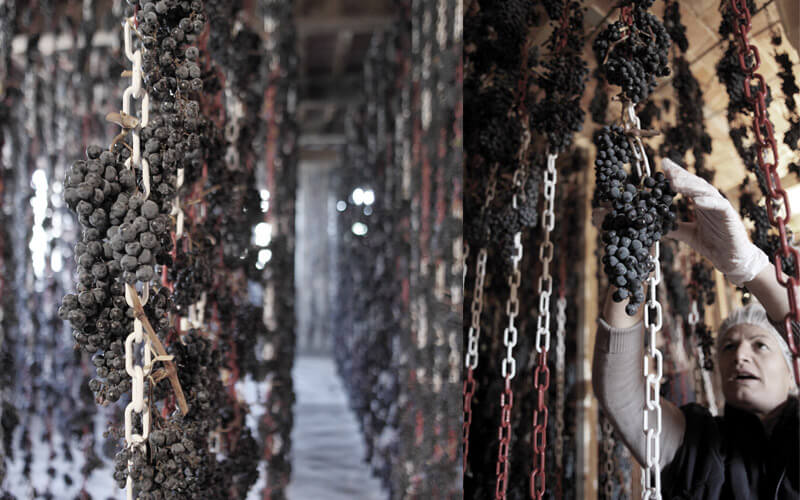
THE EVOLUTION OF CONSUMER TASTE
The evolution of consumer taste in wine in recent years
The great change we saw in recent years, in relation to wine consumption, is the destination of use. In the past, considered as a basic nutrition in diet, it is now a hedonistic means, which provides physical, mental and inspirational pleasure.
This change, which took place gradually over the decades, is not a completed process; the turning point is that a growing percentage of the population learned to understand wine in its highest cultural sense, starting to see it with different eyes, studying it to understand its true nature, discovering the nuances, typicalities and traditions that are contained in a bottle. The nineties can be identified as the starting date for the fast increase of interest in wine and its communication and culture.
Towards the end of the nineties, a strong trend calling for very structured and concentrated wines, often with high alcoholic contents and aged in barriques (at that time if the wines were not barreled they were worth nothing), multi-award winning and advertised everywhere, led consumers to orient themselves towards that wine-making style, creating a trail in which many producers channeled themselves following this type of production and selling their products at medium high prices. This led to a standardization of flavors and to the difficulty of versatility in pairing that had a negative impact in the sector but which subsequently led to a further change and to the search again for different characteristics: freshness, acidity and naturalness of the wines. The experts no longer appreciated «standardized» wines, but they began to talk about terroir and vine characteristics, typicality and vintages and above all the importance of native vines.
Thanks to the wine-making communication and to the new and different ways of communicating, it became clear from the Internet that people are increasingly talking about natural, organic, bio-dynamic, expressions of a philosophy that is slowly becoming widespread in the world of wine. There is a return to the past linked to philosophies that seek a more natural lifestyle.
In recent years, the number of wineries in line with this approach based on quality, honesty and respect increased sharply. The experts, but now also the non-experts, have began to believe that naturalness and quality are essential characteristics; today we are learning to understand the wine and read the labels, to taste it, appreciating its scents, trying also to recognize the origin and the hints that the land can leave inside the grapes. We try to select the most natural products possible, but they must be good and healthy above all. In summary, over the last 50 years we changed from a nourishing wine, elite wine and wine for everyone to reach the wine that is good for the health, that has good flavor and is suitable for everyone. We don’t know what the next half century will have in store for us, but one thing is certain: wine consumption, as it was for centuries, will not cease to exist.
Sources: Askanews.it, Istat
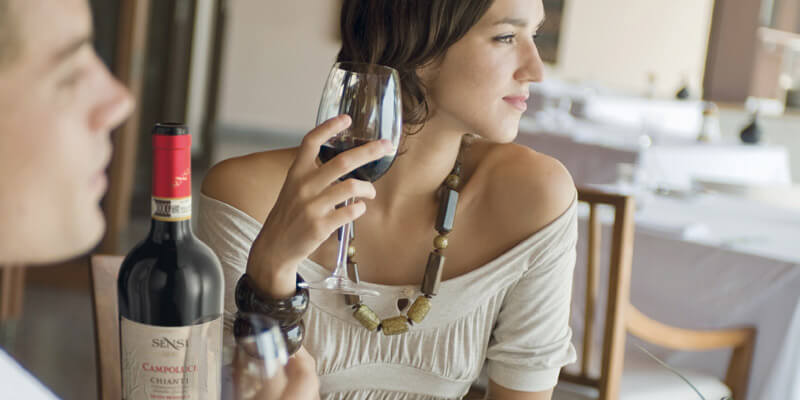
THE CONSUMPTION OF ALCOHOLIC BEVERAGES
The consumption of alcoholic beverages in recent years in numbers
Wine is consumed by 51.7% of the young population who consumed alcoholic drinks in 2016, while 47.8% of the population consumes beer and 43.2% consumes alcoholic aperitifs, bitters, spirits or liqueurs.
Moderate consumers are prevalent (48.8% of the total population and 75.4% of annual consumers). Between 2006 and 2016, the percentage of people consuming alcoholic beverages on a daily basis decreased (from 29.5% to 21.4%), but the percentage of those consuming them occasionally increased (from 38.8% to 43.3%) and outside meals (from 26.1% to 29.2%).
The traditional Italian model of daily consumption of alcoholic beverages, especially wine, during meals, thus gives way to the typical models of the Northern European countries, characterized by high consumption of alcoholic beverages even outside meals. Above all, women behavior changed: between 2006 and 2016 daily women consumers decreased from 4 million 463 thousand to 3 million 138 thousand (-29.7% compared to -23.2% for males), while women who consumed alcoholic beverages outside meals increased from 4 million 52 thousand to 5 million 250 thousand (+29.6%); on the contrary, occasional consumer women increased from 9 million 608 thousand to 10 million 641 thousand (+10.8%). Men who occasionally consume alcoholic beverages increased considerably, from 9 million 524 thousand to 11 million 795 thousand (+23.8% compared to +8.9% of women).
Over the last decade, habits in all age ranges have changed, even if in a differentiated way. Among young people up to 24 years old and adults aged 25-44, daily consumption in particular decreased; among adults aged 45-64 and seniors over 65, occasional consumers increased and, especially among women, the number of alcohol consumers outside meals increased. The population up to 24 years of age of both genders consuming alcohol, throughout the year mainly drinks wine (51.7%), beer (47.8%) and other spirits (43.2%).
The most popular beverage for adults between 45-64 years old and seniors aged 65 and over is wine, without gender differences. Over time, all age ranges change not only the consumption methods but also the type of beverages consumed. In the age range between 18-24 year olds, the exclusive consumption of wine increases substantially among males.
Sources: Askanews.it, Istat
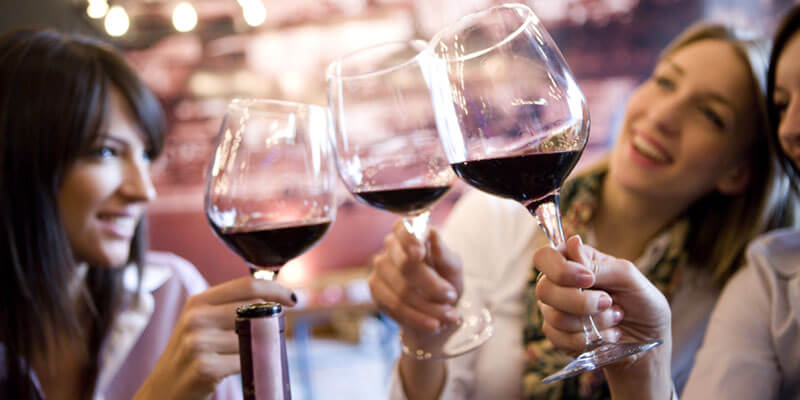
APPOINTMENTS
Sensi participates to Excellence 2017
4-5-6 novembre 2017 – Sensi partecipa a Excellence 2017, la V edizione del Salotto romano dedicato all’enogastronomia. L’evento esclusivo mette in connessione gli operatori del settore creando uno spazio per concrete opportunità di business tra produttori e buyer in un contesto culturale orientato all’avanguardia e all’innovazione. Sensi parteciperà con un proprio stand dedicato, degustazioni e abbinamenti ai cooking show di chef stellati.
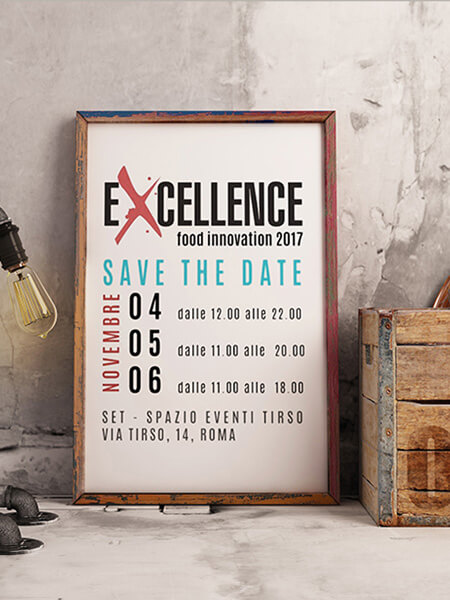
THE WINE OF THE MONTH
Edizione Anniversario
Toscana IGT Sangiovese
Anniversary Edition is the bottle that celebrates the 125th anniversary of the foundation of our company and wants to reinterpret the lines of the traditional Tuscan bottle in a modern and elegant key. From Sangiovese grapes. Deep red in color, it smells of spices and cherries. In the mouth it has good body and freshness. It closes soft and balanced with spicy sensations. The wine ages for 12 months in medium-toasted French barriques, most of them second passage. «2015 Anniversary Edition» 97 points on the 2017 Yearbook of the best Italian wines by Luca Maroni.
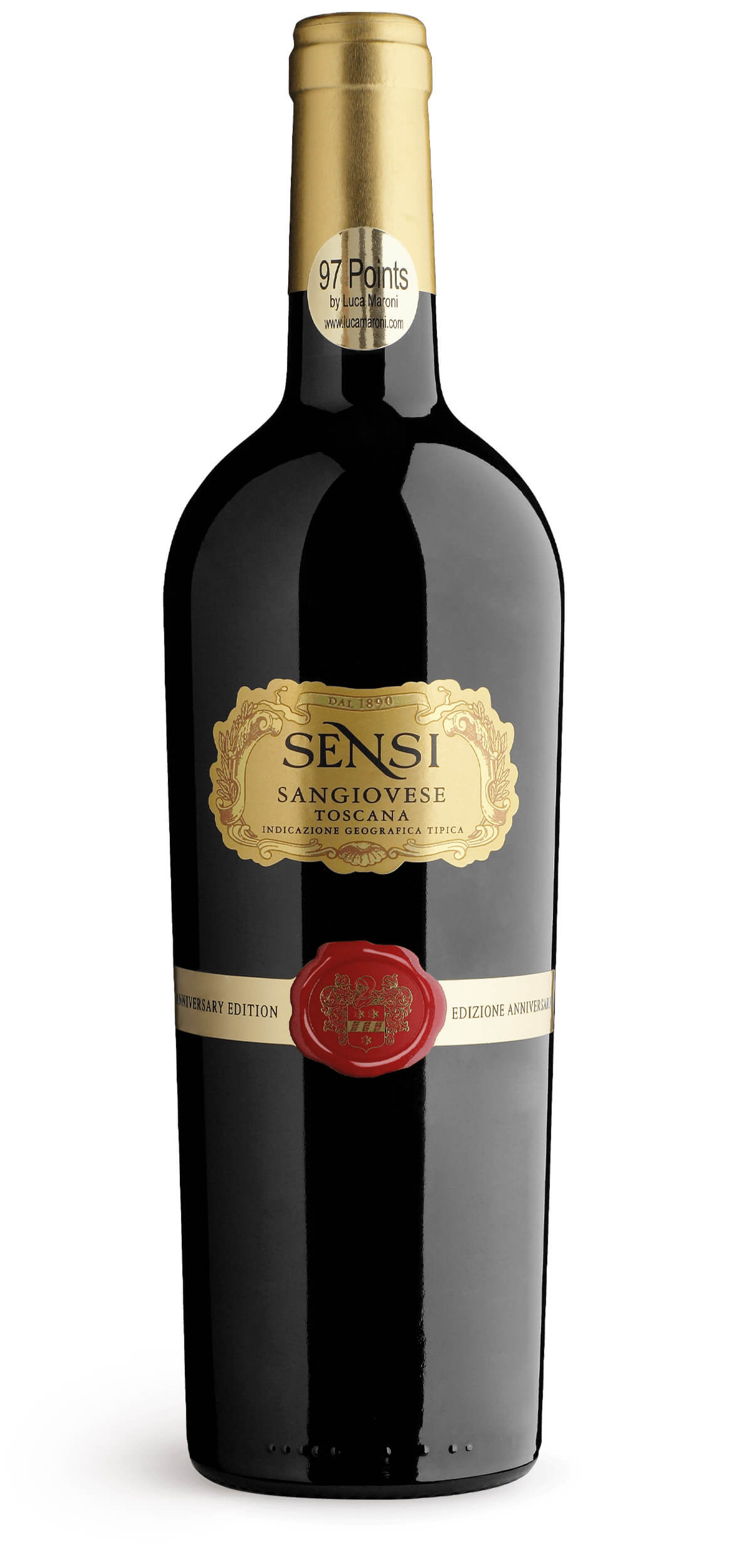
Browse our wines
NEWSLETTER
Subscribe to our newsletter
Sensi Today is Sensi’s newsletter to stay always updated on events, activities and everything related to the Sensi world. Subscribe now!


